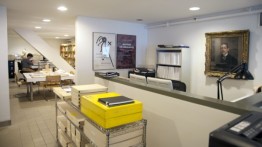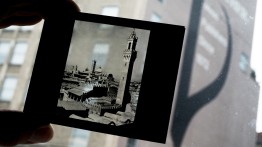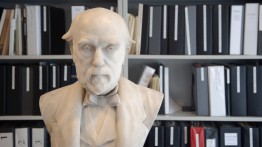Architecture Archive
Mission
The mission of The Irwin S. Chanin School of Architecture Archive is to record the School of Architecture’s pedagogy by documenting student work, to provide students with resources that augment and enhance their architectural education, and to produce informative design exhibitions, publications, events, and digital collections that enrich The Cooper Union as well as audiences in New York City and beyond.
Historical Background
In 1970, John Hejduk and Roger Canon AR’70 established a method of documenting student work for Education of an Architect: A Point of View, a publication and corresponding exhibition at the Museum of Modern Art in 1971. Supported by a recommendation of the 1980 National Architectural Accrediting Board (NAAB) Visiting Team, the Archive was established in 1983 and officially became a department of the School of Architecture in 1991. Kim Shkapich A'80 was its first director and Steven Hillyer AR’90 is its current director.
ARCHIVE PROGRAM
Documenting Student Work
At the end of each semester, the Archive documents models and drawings selected by faculty from The Cooper Union’s annual End-of-Year Exhibition, which showcases student work produced in all undergraduate and graduate design studios. This documentation is used for publications, for presenting student work to the NAAB, and for augmenting the Student Work Collection, the largest of the Archive’s holdings.
In 2016, the Archive initiated its Student Work Collection Digital Access Project, a five-year project supported by federal and private funding. Once completed, this project will provide free, online access to over 4,800 student projects spanning more than eight decades of The Cooper Union’s architectural pedagogy. The project has been divided into two phases: phase I (2016 – 2019) addressed the collection’s 30,000 analog records dating from 1930 – 2000; phase II (2019 – 2021) focuses on roughly 32,000 of the collection’s born-digital images and text collected from 2001 – 2021. As a whole, the collection documents the School’s evolving and influential approach to architectural education, and online access to its material promises to enrich public understanding of American culture, history, and the democratic ideals that shape our built environment.
Resources
In addition to its student work documentation, the Archive maintains several collections as resources for students and faculty. As a compliment to the Architecture Study Collection located on the 7th floor, the Archive also houses films, rare books, magazines, and limited edition portfolios for student and faculty use. School of Architecture publications—many of which are coveted documents of academic significance—can be purchased through the Archive. Students receive a 10% discount on all books, and funds from book sales support ongoing publication projects.
The Archive also maintains audio-visual equipment, including several digital cameras, tripods, and digital audio recording tools that are available to students for course-related work.
Exhibitions & Publications
The Archive coordinates, designs, curates, and installs exhibitions presented by the School of Architecture. These exhibitions are thematically tied to the School’s educational objectives, bridging pedagogy and public service by enriching Cooper Union’s curriculum and serving New York City’s local and regional design community.
The exhibition program is extensive and diverse, featuring the work of celebrated and emerging architects, designers, photographers, painters, builders, and sculptors, as well as faculty and students. Major exhibitions are typically held twice a year, either in the School’s Arthur A. Houghton Jr. Gallery or the 41 Cooper Gallery. The School’s Third Floor Hallway Gallery hosts shorter, rotating shows—three to four each semester—focusing on work by new faculty, invited guests, and students, as well as material from the Archive’s collections. Exhibitions span a broad range of subjects and disciplines, from emerging technologies in digital fabrication to a photographic survey of ancestral cemeteries in Kyrgyzstan. Annual End-of-Year Exhibitions, curated by faculty and students from the Architecture and Art schools, occupy much of the Foundation Building for three weeks each May and June, drawing hundreds of students and faculty from local architecture schools.
The Archive also develops and produces publications affiliated with the School’s pedagogy, including exhibition catalogs and an annual Thesis book assembled and edited by each graduating B.Arch. class.
Accreditation
The Archive assembles material for NAAB accreditations which typically occur every eight years. This includes presenting student design projects documented by the Archive as well as sample material for all coursework leading to a Bachelor of Architecture degree. To compliment this material, the Archive coordinates and installs exhibitions of student and faculty work showcasing the school’s pedagogy.
Student Staff
Assistance from work-study and part-time students is essential to the Archive’s daily activities, which include handling archival records, documenting student work, and scanning material for exhibitions, publications, and digital collections. Students also help to construct and install the Archive’s exhibitions, which is an important component of the Archive’s mission and emblematic of the School’s design studio culture and commitment to “learning by doing.”
Acquisitions
When requested by students or faculty, the Archive will acquire reproductions of significant architectural works for its blueprint collection. These requests usually occur for Design Studio or Building Technology analysis projects.
The Archive periodically receives donation offers for other material to augment its holdings. Each offer is evaluated for its relevance to existing collections as well as the Archive’s stewardship capacity.








